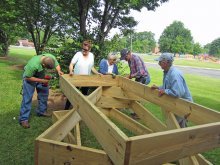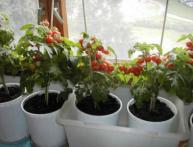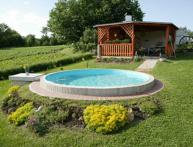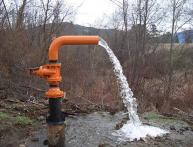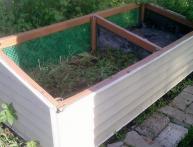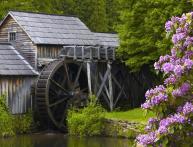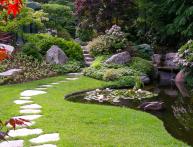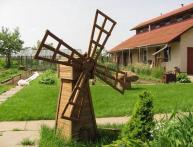How to make beds from boards with your own hands: let's figure it out together
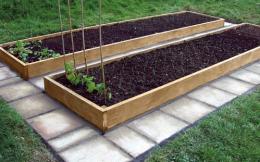
The beds on the site are made to facilitate care and increase productivity. They can be made using various materials: wood, slate, etc. Most often, wood is used as a material for arranging beds.
Content:
- Advantages and disadvantages of board beds
- Features of choosing material for wooden fencing
- Beds made from boards: step-by-step instructions
Advantages and disadvantages of board beds
Fencing for beds made of boards not only looks attractive, but also performs practical functions. A bed fenced with boards does not crumble. Wooden sides can hold priming, while maintaining the shape and size of the bed. The fencing structure is much easier to weed. This is due to the fact that the area for weed germination is reduced. Also, framed beds are convenient in a greenhouse. If necessary, layers of soil can be filled in. The main advantages of beds made of boards:
- there is no shedding of beds
- minimum time for weeding
- cheap material
- simple installation
- ease of use
- long service life
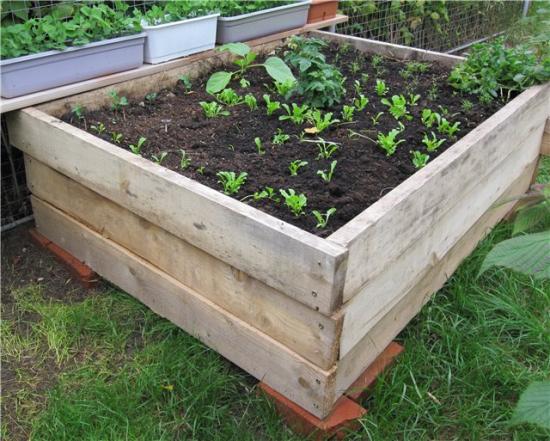
The beds, fenced with boards, are dug up twice - during planting and after harvesting. The only disadvantage of such a fence is its fragility. Under the influence of various factors, the wood will begin to rot. To avoid this, use wood impregnation. It is important to choose high-quality and environmentally friendly material to protect wood.
Features of choosing material for wooden fencing
Boards are the most acceptable and common material for fencing beds. When installed correctly, they fit tightly to the soil and do not leave any gaps. In addition, the board structure retains moisture well inside the bed, which has a beneficial effect on the growth and development of plants. Wooden boards for beds must be made of durable material - oak or ash.
Such material rarely rots, but is highly expensive. Pine fencing boards are not durable. They should be impregnated with a special substance to prevent rotting.
When making structures for garden beds, it is better to use boards made from coniferous trees. Cedar or larch would be the best material. Resin can protect against external influences.
Beds made from boards: step-by-step instructions
For fencing, you can use boards, slats and beams. The height of the bed can be any. You should know that if the bed is too high and wide, it will be inconvenient to work and harvest on it. The optimal height of the bed is no more than 15 cm. If the soil is not suitable for growing vegetables, then add a layer of fertile soil. soil, which means the height in this case will increase to 30-40 cm. For work you will need the following tools:
- Shovel
- Level
- Roulette
- Self-tapping screws
- Screwdriver
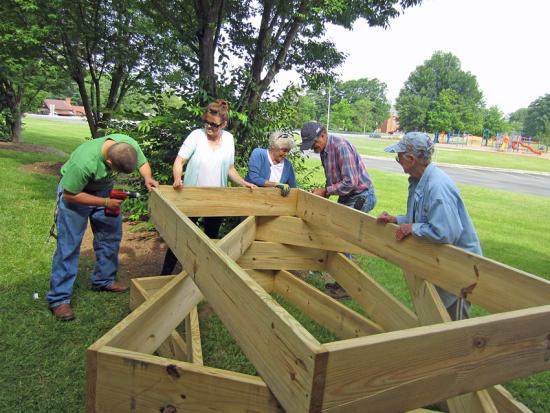
First you need to decide on the shape and size of the beds. After this, prepare the material. You can use old wooden boards, but it is first recommended to remove all nails and level the boards using a plane. Then mark the beds and cut the boards according to the measurements.For a rectangular bed 3 meters wide and 1 meter long, you will need 4 boards. Connect the sawn boards using nails. Next make the legs. To do this, nail boards of any length to the 4 corners from the inside. Nail 2 more legs in the middle of the length of the manufactured frame. In order for the legs to penetrate the soil better, they should be sharpened with an ax.
You can install a wooden box in one of 2 ways: directly on the ground and without digging up the soil, or install it in depth. The next step is to prime the boards. This is necessary to protect against moisture, sunlight, fungus and insects and others. pests. You can make the primer yourself or buy it ready-made in the store. If you decide to do it yourself, you will need quicklime, laundry soap and water. Pour a kilogram of lime into 2 liters of water. Take laundry soap and grate about 100 g and add hot water. Then add the soap solution to the water with lime and mix well. If you need water, be sure to top it up. Before using the prepared mixture, it must be strained.
After priming, treat the fence with oil paint. This way you can not only protect from adverse weather conditions, but also give an attractive appearance. After the structure is ready, fill the bed. First add drainage and then soil. Then water until the soil settles. When constructing a warm bed, its height should be at least 50 cm. You should also remember to place compost fertilizer between the soil and the drainage layer. Making a garden bed with your own hands is not difficult, the main thing is to follow the sequence of work and recommendations.
Video about beds made from boards:
Interesting information about the vegetable garden


